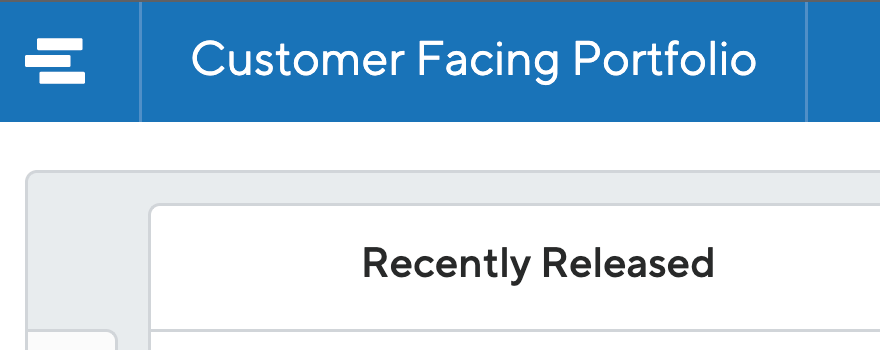Let’s imagine you’re planning a trip across the country. You know where you’re departing from, where you want to get to, and what resources you have available (like the vehicle, budget, traveling gear, etc.), so all that is left to do is to map your way there.
There are a couple of ways you can do this: you can plan your trip according to the time you have available (i.e., you need to get from point A to point B in x amount of days), or you trace your route based on the sights you don’t want to miss. Another option is to be more flexible, choosing the road you want to travel and picking the stops along the way.
Product roadmapping frameworks work in a very similar way. There are a few routes you can take to achieve your product goals. As you choose which one you want to take, you must consider how you will allocate your resources along the way and set milestones to check off as you get through. Let’s map this out.
Recap: What are Product Roadmaps?
A product roadmap is a holistic visual document that outlines your product’s growth path. A stellar roadmap includes the release of new features, key dates, product updates, and the product vision – giving context to the product lifecycle.
Product roadmaps are a good way for organizations to prepare for the future. If there’s a new product to launch, the tasks and timeframes will also be clear to everyone.
Why is roadmapping important for product led-growth?
In the era of product-led growth, the product roadmap is essential. Roadmapping helps you list all your competing priorities and narrow them down to what’s most important and relevant for the team and stakeholders.
Prioritization is another crucial part of product-led growth. According to ProductPlan’s 2022 State of Product Management Report, it’s the most challenging aspect of product management, with 22 percent of survey respondents ranking it as their biggest hurdle.
Hence, besides electing the roadmapping framework that works best for your organization’s goals, choosing the right prioritization framework to help you determine the most important tasks and milestones along the way is also important.
An effective product roadmap will:
Support vision and strategy
A product roadmap will outline how your product vision and strategy can become a reality. It should convey the strategic direction for your product and tie it back to the company’s strategy. But it should also be a source of inspiration, motivation, and shared ownership of the product and its successes.
Guide teams toward success
Sometimes we know what success looks like, but while managing all branches of product development, we can forget the actions needed to succeed. A product roadmap will keep you on track.
Strengthen internal alignment
Strong product-led teams have strong and well-oriented synergy between engineers, product leaders, marketers, customer support, and all other stakeholders. A product roadmap will serve as a guide to keep teams aligned and accountable for the same goals and milestones.
Help communicate with external stakeholders and customers
A strong customer and stakeholder relationship is one that acts as a partnership. Achieving that requires a transparent line of communication that can paint a picture of the company’s evolution and future.
With a customer-facing roadmap, you can address common questions from your customers like:
- What is the company working on right now?
- What new features and updates are coming next?
- Why is the company doing what they are doing?
What to avoid when building a product roadmap
A common and unfortunate mistake made by SaaS product teams is to treat the roadmap as a static, archival document developed early in the product development lifecycle.
A successful product roadmap evolves alongside your product. Traditional roadmapping methods like spreadsheets and Gantt charts can be impractical for the team as they focus primarily on task management rather than setting actionable milestones that center on product success. A visual and collaborative roadmap can be more effective in communicating and tracking progress.
Who is Responsible for Roadmapping?
Creating a product roadmap is primarily a responsibility of the Product team, but it is also a group effort as it concerns all internal stakeholders. This combination of collaboration and discrete ownership gets stakeholders onboard while maintaining informational integrity and avoiding a free-for-all atmosphere.
Product management begins with a clear understanding of the product’s and the organization’s strategic objectives. Then, with the desired outcomes in mind, product management creates the key themes for this portion of the product’s lifecycle.
Tip: Chameleon has an excellent guide to Product Management frameworks that can help you strategize your growth path.
In a remote-first world, collaboration can become somewhat of a challenge. However, there are frameworks and tools that can facilitate successful collaboration, like ProductPlan’s dynamic roadmapping tool that offers key features that enable collaboration:
- Custom views: show stakeholders exactly what they need to see
- Roadmap level conversations: hold and document conversations within the roadmap
- Integrations: connect your roadmap with your tech stack to track progress, status, and completions.
Watch our webinar: Working Better Together: How to Collaborate in a Remote World
3 Examples of Roadmapping Frameworks
Let’s go back to the cross-country road trip analogy at the start of this article. If you’re starting to map your trip out, you typically ask yourself the following questions:
- Where am I beginning my journey?
- What is my final destination?
- What resources do I have?
- How long do I have to get there?
- What are the routes I should consider?
- Who else is involved in my trip, and what are their goals?
As you answer these questions, you’ll better understand your goals and what roadmapping framework makes the most sense, given your resources, constraints, and priorities. We’ve selected three frameworks that work well for product teams.
Timeline roadmaps
If you’re working on a new product release and have it tied with a specific date-based event in the future, the best strategic move is to use a timeline roadmap. This type of roadmap outlines every task and step your team members need to take to achieve the final goal and the timeframe to complete each milestone.
The timeline roadmap is a visual representation of a strictly time-constrained workflow. That said, this type of roadmap would suit a Scrum workflow within sprints.
To make it easy to understand, you can include the upcoming tasks that need to be completed and attach key dates and other relevant information. Share the roadmap across the teams in your organization to ensure everyone is on the same page.
Here is an example of a Release Plan Template
Swimlane roadmaps
On the other hand, if your product or feature release is not explicitly connected to a specific date, you can exclude the dates from your roadmap. Instead, you could make it quarterly-based with an overview of the planned product lifecycle development.
The swimlane roadmap is also a good choice for emphasizing what is planned, what’s in progress right now, and what has already been completed.
Here’s a template to help you build a roadmap aligned with your product development
Flexible roadmaps
Flexible roadmaps are another way of organizing the roadmap for your next product or feature release. It can be a release-based, an outcome-based roadmap, a roadmap based on customer requests, or any other type that suits your needs that aren’t strictly related to a specific timeframe.
Besides that, in our guide to flexible roadmaps, we also talk about the value that lean, feedback-oriented roadmaps can bring to your team – and your customers.
You can use in-app surveys to evaluate customer satisfaction, include them in feature ratings or request voting, and collect feedback to make better-informed decisions. Use the insights you gain to validate your feature ideas and further iterate your roadmap.
Product landscapes vs. roadmaps
While a roadmap answers the questions of “what” and “when” to build, a landscape answers the question “why”. In other words, a product landscape gives a broader picture of the product’s context. It includes the product mission, go-to-market strategy, and the overall position of the product in the market, along with the desired vision of where the product is going.
Tools for Successful Roadmaps
Alright, now that you know what framework works best for you, it’s time to build your roadmap. Here are a couple of tools to help you in the process.
ProductPlan: Build your roadmaps
ProductPlan is a roadmap platform that aligns team members in a visual, dynamic, and intuitive interface that concentrates your roadmapping efforts in a single, customizable space.
Chameleon: Gather user feedback
Chameleon is a Digital Adoption Platform that allows you to create code-free and native-looking in-product experiences that boost product activation and adoption. You can run in-app surveys to gather contextual user feedback and use it to inform your strategy.
Choosing the Right Framework
Whether you’re starting your roadmap from scratch or revisiting and updating your existing one, we hope this guide will help you choose the right framework.
Before you get to it, let’s just recap some key points:
- Use your product strategy and vision to guide you in the roadmapping process.
- Prioritize tasks and milestones that will get you closer to your ultimate goal.
- Avoid static roadmaps that do not evolve alongside your product.
- Leverage collaboration in the process of building your roadmap.
- Use different SaaS tools to optimize your roadmapping process.
See you at the end of the road!





